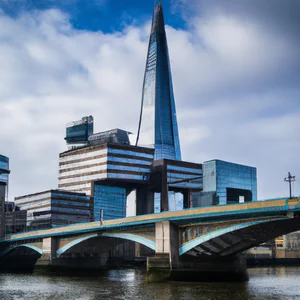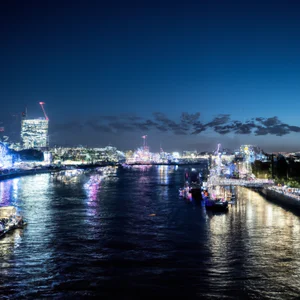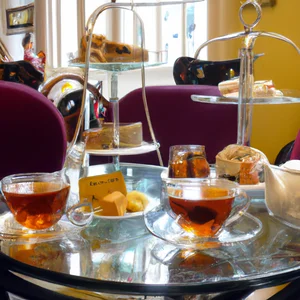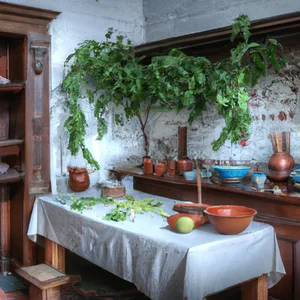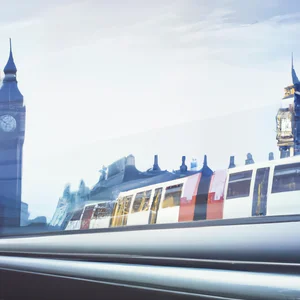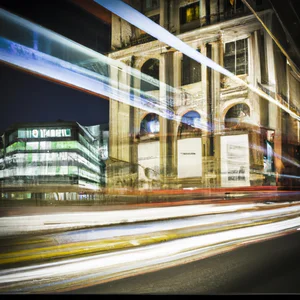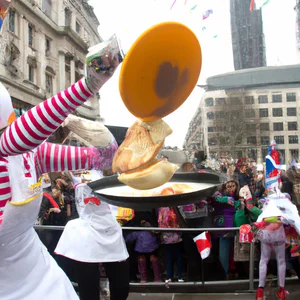Book your experience
Historic pubs in London: a journey through time between pints and British history
The historic pubs of London: a journey through time between pints and British history
Ah, the pubs of London… They’re a bit like old friends you haven’t seen for a long time, but when you meet them, you immediately feel at home. If you think about it, these places are not just for drinking a beer, but are real treasure chests of history! I don’t know, but every time I enter one of these places I feel like I’m taking a step back in time.
Imagine sitting in a pub that is more than a century old, with creaking wooden beams and walls full of black and white photographs. Once, I found myself in a pub that dates back to the 1700s, and I can’t tell you the feeling! It’s like every pint of beer has a story to tell. Maybe you even spent some time chatting with locals, and that’s when you realize that everyone has their own story to share.
And then, let’s talk about the pints… Oh, what a delight! I don’t know if you’ve ever tried it, but when you sip a good ale in a place like “The George Inn”, you feel a bit like an English lord, even if in reality you are just a tourist with a pair of comfortable shoes . Well, by the way, the first time I tasted a stout there, I thought: “Wow, this is the taste of tradition!”.
Of course, not all pubs are the same. Some are a little more modern and hipster, while others make you feel like you’re in a historical film. But hey, everyone has their own style, right? And I think that’s the beauty of London: every corner has something unique to offer.
In short, if you are in the mood for an adventure that combines history, beer and a pinch of chatter, you can’t miss the historic pubs of the British capital. Maybe, you too could find your favorite place, where you can return every time you feel like a good pint and a story to tell.
Iconic pubs: history and unique architecture
An Anecdote to Remember
I remember the first time I walked through the door of The George Inn, a historic pub located in Southwark. The warm, enveloping light of the gas lamps illuminated the wooden beams that crossed the ceiling, while the scent of fresh beer mixed with that of aged wood. Sitting in a corner, I listened to an elderly gentleman tell stories of a time gone by, when this place was a fundamental stop for travelers heading south. It was at that moment that he fully understood the essence of London pubs: not just places to drink, but real time capsules that tell the story of the city.
London’s Iconic Pubs
London is dotted with iconic pubs, each with a story to tell. The Lamb & Flag, for example, is famous for its unique architecture and its theatrical history. Founded in 1623, it was the favorite refuge of illustrious names such as Charles Dickens. This historic structure, with its red brick facades and sash windows, is a perfect example of how architecture can reflect changes over time.
According to the London Heritage Trust, many of these pubs are protected as historic monuments, meaning their architectural features need to be preserved for future generations. During a visit, one can’t help but notice the ornamental details, such as the decorative ceramic tiles and carved wooden panels that tell stories of bygone eras.
Insider advice
If you want a truly authentic experience, visit The Old Bell Tavern on Fleet Street, where you might find not only great beer, but also a small library of old books in the back. This secret corner is known only to locals and represents a unique way to immerse yourself in London’s literary culture.
Cultural Impact and History
Historic pubs are not just meeting places, but also cultural centers that have influenced London’s social life. During the Victorian period, pubs became spaces for political and cultural discussion, helping to shape British identity. During the World Wars, many pubs served as refuges, uniting the community in times of crisis.
Sustainability in Pubs
In an age where sustainability is key, many historic pubs are adopting responsible practices, such as using local and organic ingredients, thus reducing their environmental impact. For example, The Eagle in Farringdon is famous for its commitment to eco-sustainable hospitality, using only zero-mile products.
Experience to Try
Don’t miss the opportunity to take a craft beer tasting tour at one of these historic pubs. Several local companies offer tours that will not only allow you to taste different varieties of beer, but also discover the fascinating stories behind each establishment.
Myths and Misconceptions
A common misconception is that pubs are predominantly places of excess. In fact, many of them offer a welcoming and inclusive atmosphere, where people come together to socialise, discuss and share experiences. The idea that pubs are only for those who want to drink is completely wrong; they are spaces of community and culture.
A Final Reflection
When visiting London, it is important to consider how historic pubs are not just places to see, but true custodians of British history. Have you ever wondered what stories are hidden behind the doors of a pub you frequent? Next time you raise your glass, take a moment to reflect on the history around you and how each pint represents a piece of London’s rich cultural tapestry.
Pint and History: The Evolution of British Pubs
A toast to the past
Imagine walking into a pub that has seen centuries of history, with walls that tell stories of past patrons and an atmosphere that conveys a sense of community and tradition. The first time I crossed the threshold of The Eagle and Child in Oxford, known for being J.R.R.’s hangout. Tolkien and C.S. Lewis, I felt a chill. It wasn’t just the smell of fresh beer that struck me, but the echoes of the conversations that had once taken place there. This pub, like many others, is a perfect example of how British pub culture has evolved over the centuries, from simple public houses to centers of social and cultural life.
The transformation of pubs over time
British pubs have very ancient origins, dating back to Roman times, when they served as places of rest for travelers and soldiers. As the centuries passed, these inns transformed into meeting points for local communities, reflecting the social and political dynamics of their time. Today, many historic pubs not only offer craft beers and traditional fare, but also serve as art galleries and cultural event spaces, helping to keep local culture alive.
An insider tip
A tip that few people know is to always ask the pub bartender for the local beer of the month; often, these beers are not advertised and represent the best of local microbreweries. Plus, pubs tend to change their offerings seasonally, so don’t miss the chance to try something unique and fresh!
A significant cultural impact
Pubs are not just places to drink, but true symbols of British culture. They represent a refuge from the hustle and bustle of everyday life, a place where people can gather, socialize and discuss current affairs, art and sport. Their importance is such that in 2018, the British government launched initiatives to protect historic pubs, recognizing them as cultural heritage.
Responsible tourism practices
When visiting a pub, consider opting for local craft beers and typical dishes, thus contributing to the local economy. Furthermore, many pubs are now engaging in sustainable practices, such as waste recycling and the use of zero km ingredients, which make your toast even more meaningful.
Engaging atmosphere
Entering a historic pub is like taking a dive into the past; the dark wooden beams, soft lights and the sound of clashing glasses create an intimate and welcoming atmosphere. Imagine sipping a pint of bitters, while listening to fascinating stories of ghosts and local legends told by an elderly patron. It is an experience that involves all the senses.
An activity worth trying
During your visit, take part in a pub quiz night, a popular activity in Britain. It’s a fun way to socialize and learn more about locals as you test your knowledge on topics ranging from history to pop culture.
Myths to dispel
A common misconception is that pubs are just for drinking; in reality, they are spaces of inclusion and conviviality. It is not uncommon to find families and groups of friends gathering to eat, play cards or simply chat. Pubs represent a microcosm of British society, with a variety of people frequenting them.
Final reflection
The next time you enter a British pub, take a moment to appreciate not only the beer you’re sipping, but also the history that establishment carries with it. What stories might you discover by listening to conversations around you? Pub culture is an invitation to explore the social and historical connections that bind us all.
Discover London’s hidden pubs
A journey among secret treasures
The first time I left the crowded streets of London behind to explore its hidden pubs, it was an experience I will never forget. I was in the Clerkenwell neighborhood when a small wooden sign, half-hidden behind a hedge, caught my attention. “The Jerusalem Tavern” it said, and with an uncertain step I crossed the threshold. Inside, the smell of old wood and craft beer filled the air, as a group of locals gathered around a table telling stories of times gone by. This pub, dating back to 1720, is just one of the many hidden gems London has to offer.
Secret pubs and their history
London’s hidden pubs tell stories that aren’t often found in guidebooks. Places like “The Gunmakers” in Clerkenwell and “The Old Bank of England” in Fleet Street not only offer high-quality local beers, but also bear witness to centuries-old history. Many of these pubs were built on old taverns and bring with them a unique architectural charm, with dark wooden beams and walls decorated with historic photographs.
According to the London Pub Map, there are over 7,000 pubs in the capital, and only a fraction of them are known to tourists. The beauty of discovering a hidden pub is that you often meet locals too, ready to share anecdotes and legends of the area.
An insider tip
If you want to discover some of these pubs, I recommend you visit “The Blackfriar” in the Blackfriars district. This pub is not only famous for its excellent selection of beers, but also for its stunning mosaics which tell the story of the monk who once lived here. But here’s the tip: ask the bartender to show you the “secret room” upstairs, a private corner that few know about and which offers a spectacular view of the city.
Cultural impact and sustainable practices
London’s hidden pubs aren’t just places to eat; they are the beating heart of British culture, spaces where people come together to share experiences and strengthen social bonds. Many of them are embracing sustainable tourism practices, such as offering local beers and organic ingredients in their dishes, thus supporting local producers.
An experience not to be missed
When exploring these hidden treasures, don’t forget to order a typical dish, such as fish and chips or a ploughman’s lunch, to be enjoyed with a cold craft beer. The welcoming and informal atmosphere of these pubs will make you feel at home, even if you are far away.
Myths to dispel
A common misconception is that London’s pubs are all expensive and inaccessible. In fact, many of these hidden pubs offer reasonable prices and delicious food, away from the tourist traps. The key is knowing where to look and, above all, being ready to explore.
Final reflection
The next time you are in London, I invite you to take a map and get lost in its lesser-known corners. By doing so, you will not only have the opportunity to enjoy a beer in a unique pub, but also to discover the stories and traditions that make this city so fascinating. Which hidden pub would you like to discover first?
A toast with ghosts: haunted pubs
A spine-chilling experience
I remember the first time I entered one of the most haunted pubs in London, The Ten Bells, located in the heart of Spitalfields. The dim light of the gas lamps created an almost magical atmosphere, but the thrill I felt was not only due to the environment. As I sipped a craft beer, the bartender told me the story of a young woman, Annie, who frequented the pub in the 19th century. It is said that her spirit still wanders within the walls, seeking justice. This anecdote made me reflect on how history and the paranormal intertwine in British pubs, making every sip a toast to the past.
History and architecture of haunted pubs
Haunted pubs aren’t just places of interest for thrill-seekers; they are also custodians of fascinating stories and unique architecture. Many of these places date back centuries, and their wood and stone structures tell stories of bygone eras. A notable example is The Spaniards Inn, which, as well as being an iconic pub, boasts links to the literature of Charles Dickens and is said to be inhabited by several restless spirits. The combination of history and architecture makes every visit an immersive experience.
A little-known tip
If you want an authentic experience, consider taking one of the ghost tours held regularly in London’s haunted pubs. An expert guide will lead you not only through the ghost stories, but also among the secrets and architectural curiosities that often escape most. Don’t forget to bring a camera with you; some say that spheres of light appear in photos taken in these places.
Cultural impact and sustainable practices
Haunted pubs are a reflection of British culture, where history and folklore are intertwined with everyday life. They act as custodians of collective memories and as meeting points for communities. In an age of growing ecological awareness, many of these pubs are adopting responsible tourism practices, such as using recycled materials and promoting local beers, to reduce their environmental impact.
An experience worth trying
If you dare, I recommend joining a ghost hunt at The Grenadier, famous not only for its spooky history, but also for its typical dishes. Try Beef Wellington, a dish that, according to legend, might give you an extra chill if eaten while telling ghost stories.
Myths to dispel
A common misconception is that haunted pubs are only for thrill seekers. In reality, they are spaces rich in history and culture, where each table could tell a story. Don’t be fooled into thinking they’re just macabre places; they are, in fact, vibrant and lively meeting points.
Final reflection
Next time you find yourself in a haunted pub, ask yourself: which ones are stories hidden behind that glass of beer? Each sip is a toast not only to life, but also to the ghosts that surround us, inviting us to explore the depths of British history and folklore. Are you ready to discover what lies behind the walls of a pub?
Stories of famous patrons and writers
A toast to literature
I vividly remember my first visit to The Eagle and Child, a pub in the heart of Oxford, known for being the haunt of illustrious writers such as J.R.R. Tolkien and C.S. Lewis. As I sipped a pint of ale and gazed at the ancient wooden beams above me, I felt like I could almost hear their passionate conversations, which brought fantasy worlds to life. This pub, with its intimate and welcoming atmosphere, is not just a place to drink, but a living piece of literary history.
A blast from the past
British pubs are not just meeting places, but keepers of compelling stories. From the worn tables where poetry was discussed to the counters where a new novel was toasted, every corner of these places has something to tell. For example, the Olde Cheshire Cheese in London, which saw patrons such as Charles Dickens and Mark Twain, has remained largely unchanged since 1667. Its unique architecture, with narrow corridors and dark halls, is a journey back in time, where the history is intertwined with daily life.
An insider tip
One of London’s best kept secrets is The Lamb and Flag, a little-known but storied pub. It is said that here, in the 17th century, poets challenged each other in verse duels, a custom that contributed to making this place a symbol of literary creativity. Don’t forget to ask the bartender for stories about famous patrons; they are often more than happy to share fascinating anecdotes.
A lasting cultural impact
Historic pubs have had a significant impact not only on British culture, but also on world literature. Places like Ye Olde Trip to Jerusalem in Nottingham, one of England’s oldest pubs, have inspired writers and artists over the centuries, becoming an integral part of the country’s cultural narrative. These spaces represent a microcosm of society, where ideas and stories intertwine.
Sustainable tourism practices
Visiting historic pubs can also be an opportunity to practice responsible tourism. Many of them, like The Coach and Horses, are committed to using local and sustainable ingredients for their food offerings. Supporting these venues means contributing to a culture that values community and the environment.
An atmosphere to experience
Imagine entering a historic pub, with the scent of aged wood and the echo of laughter resonating between the walls. The soft lights create an almost magical atmosphere, while customers exchange stories and toasts. It’s an experience that goes beyond the simple act of drinking; it is a celebration of life, literature and human connection.
An activity not to be missed
If you are in Cambridge, you cannot miss a visit to The Anchor, where the poet Lord Byron used to go. Here, you can enjoy a pint overlooking the River Cam, while reflecting on how the beauty of the landscape has inspired generations of writers. Experience the atmosphere and let the stories of the past inspire you.
Myths and misconceptions
It’s a common myth that pubs are just places to hang out for heavy drinkers. In reality, they are spaces for meeting and exchanging ideas, where culture and history are celebrated. These venues offer a safe haven for creativity and art, away from the frenzy of modern life.
A final reflection
Next time you enter a historic pub, take a moment to reflect on who may have set foot there before you. What stories, thoughts and dreams were shared there? Perhaps, you too could be part of a new narrative, contributing your experiences to a legacy that lives on. What do you think? What stories would you like to tell in an iconic pub?
The pub as a social centre: an authentic experience
A personal anecdote
I still remember my first trip to London, when I found myself in a quaint pub in the heart of Camden. Between the walls decorated with posters of historical concerts and the smell of traditional food that mixed with the laughter of the customers, I understood that the pub was not just a place to drink, but a real social centre. I joined a table of strangers who were animatedly discussing music and art; in that moment, the barrier between visitors and locals dissolved, and I felt part of something special.
Practical information
British pubs, symbols of local culture, are much more than just places to enjoy a beer. According to a report by the British Beer and Pub Association, over 20 million people visit pubs every week, making them vital to social life in the UK. Today, many pubs offer events such as quiz nights, live music nights and even craft beer workshops, making the experience even more engaging. To find out what events are happening in your area, I recommend visiting local websites like Time Out London or DesignMyNight.
An insider tip
If you want an even more authentic experience, look for pubs that aren’t simply on the “must-visit” list. Often, lesser-known pubs offer storytelling evenings, where locals tell fascinating stories about their lives, making the atmosphere warm and welcoming. One example is The Old Red Lion in Islington, known for its poetry and theater evenings, where you can immerse yourself in local culture in a way that passing tourists often overlook.
Cultural impact
The pub has always played a crucial role in British culture. Historically, they were the places where political and social issues were discussed; today, they continue to perform this function, often becoming meeting places for debates on contemporary issues. In modern London, pubs are inclusive spaces, where people from all walks of life can come together and share moments of conviviality.
Sustainability and responsibility
Many pubs are adopting sustainable practices, such as using local ingredients and reducing food waste. It is a way to respect the environment and, at the same time, support the local economy. If you’re sustainability-minded, look for pubs that promote green initiatives, such as The Eagle in Farringdon, known for its commitment to reducing plastic and selecting local craft beers.
Vivid atmosphere
Entering a British pub is like taking a dive into the past: the wooden beams, the soft lights and the sound of glasses crossing each other create an almost magical atmosphere. Each table contains a story, and each beer poured is an invitation to share a moment with others. The pub experience is a mosaic of sounds, flavors and faces, a true reflection of the community that surrounds it.
An activity worth trying
To fully enjoy this social experience, take part in a quiz night at a local pub. It’s a fun way to socialize and test your knowledge while bonding with those in attendance. Don’t forget to order a typical pub dish, such as fish and chips or a ploughman’s lunch, to complete the experience.
Myths to dispel
A common misconception is that pubs are just for drinking. In reality, they are places of meeting and social interaction, where you can enjoy good food and participate in cultural events. It is not uncommon to see families and groups of friends gathering for a convivial dinner, dispelling the idea that the pub is just a place for drinkers.
Final reflection
Next time you enter a pub, take a moment to observe the atmosphere around you. What do other people’s conversations tell you? What stories are hidden behind the looks you encounter? Perhaps, by discovering the pub as a social hub, you might find bonds and connections you didn’t expect. What will be your story to tell?
Sustainability in pubs: drinking responsibly
A conscious toast
I still remember my first visit to a pub in London, a crowded and lively place, where the smell of fresh beer mixed with the laughter of the customers. While I was sipping an excellent craft ale, I noticed a small sign next to the bar: “Drink responsibly”. That simple phrase sparked a deep reflection in me on the importance of sustainability, not only in the choice of drinks, but also in the way we live our socializing experiences.
The reality of sustainable pubs
In recent years, many British pubs have adopted sustainable practices, becoming pioneers of a movement that combines tradition with ecological responsibility. According to research conducted by The British Beer & Pub Association, over 60% of pubs are currently implementing initiatives to reduce their environmental impact. These include using local ingredients, recycling waste and reducing plastic consumption. In London, The Duke of Cambridge pub is famous for its sustainable approach: it is the first certified organic pub in the city and only serves beers produced with sustainably grown ingredients.
An insider tip
If you really want to immerse yourself in the culture of sustainability in pubs, try asking the bartender about local suppliers. Many pubs are proud to tell the story of their brewers and may offer you samples of craft beers that you wouldn’t find elsewhere. Also, don’t forget to order a half pint; not only is it a more responsible choice, but it allows you to try more variety without overdoing it.
A lasting cultural impact
Sustainability in pubs is not just a trend, but a cultural shift that reflects growing social awareness. Pubs have historically been considered the beating hearts of communities; now, with the adoption of eco-friendly practices, they are also becoming centers of environmental education and awareness. This new approach helps keep traditions alive, but also invites future generations to reflect on the impact of their choices.
Responsible tourism practices
When choosing to visit a pub, consider the impact of your actions. Opt for sustainable means of transport, such as cycling or public transport, and try to limit the use of single-use plastic. Many pubs also offer vegan or vegetarian menu options, which can help reduce your carbon footprint.
An atmosphere to experience
Imagine entering a welcoming pub, with soft lights and the sound of glasses crossing. The warm wood of the counters and the walls adorned with historical photographs tell stories of customers who, like you, found refuge and company in that place. Sustainability isn’t just a concept: it’s a way to make every sip more meaningful, a celebration of community and the environment.
An experience worth trying
For a unique experience, join a sustainable pub crawl in London, where you can explore various venues embracing the eco movement and sample local beers. You will discover how every sip can tell a story of commitment towards a better future.
Myths to dispel
A common misconception is that sustainability means sacrificing quality. In fact, many sustainable pubs offer some of the most delicious beers, thanks to the use of fresh, local ingredients. Drinking responsibly doesn’t mean giving up taste, but rather choosing to appreciate what’s good for you and the planet.
Final reflection
Have you ever wondered how your drink choices can affect the environment? Next time you’re in a pub, take a moment to reflect on how your drinking habits can contribute to a more sustainable future. Ultimately, every toast can be a step towards positive change.
Culinary traditions: typical dishes to enjoy in London’s historic pubs
When we think of London pubs, our minds inevitably run to images of pints of frothy beer and lively chatter between friends. However, what is often overlooked is the rich culinary heritage that animates these places. My first visit to Ye Olde Cheshire Cheese, one of the city’s oldest pubs, was an experience that amplified this awareness. As I enjoyed a steaming fish and chips, the owner told me about the tradition of serving simple but hearty pub food that dates back centuries.
Typical dishes not to be missed
In London’s historic pubs, you will have the opportunity to enjoy authentic British delicacies. Here are some dishes you should definitely try:
- Fish and Chips: A classic, served with mashed peas and tartar sauce.
- Sunday Roast: Roast meat accompanied by potatoes, vegetables and Yorkshire pudding, a must in the Sunday tradition.
- Bangers and Mash: Sausages served with mashed potatoes and onion gravy.
- Ploughman’s Lunch: An assortment of cheeses, crusty bread and pickles, ideal for a quick lunch.
An insider tip
If you want to discover a lesser-known but delicious typical dish, look for the Scotch Egg, a hard-boiled egg wrapped in sausage and breaded, perfect to enjoy with a craft beer. It may seem like a simple snack, but its history is rooted in British food traditions, making it an authentic taste of the past.
The cultural and historical impact
Pub food is not just a way to refresh yourself, but represents an important link with British culture. These traditional dishes tell stories of everyday life, of farmers and workers who gathered to share a meal after a long day. Every bite is a tribute to the history of a nation that has managed to combine simplicity and taste.
Sustainable tourism
Many historic pubs in London are adopting sustainable practices, using local and seasonal ingredients for their dishes. This not only supports local producers, but also helps preserve the environment. Choosing to eat in pubs that follow these practices is one way to make a responsible choice during your stay.
Conclusion
Walking the streets of London, every pub can tell a story through its dishes. The next time you find yourself in front of a menu, ask the staff for the house specialties and let yourself be surprised by the authentic flavors of British tradition. And you, which typical dish can’t you wait to try on your next trip to London?
A trip to the historic pubs of East London
Recently, I had the pleasure of exploring the historic pubs of East London, an area that is like a hidden treasure amidst the hustle and bustle of the city. During a walk in the Shoreditch neighbourhood, I came across “The Old Blue Last”, a pub that is not only famous for its craft beer, but also for its musical roots in punk rock. As I sipped a pint, I heard the echoes of the tunes of historic bands that once performed there, and I imagined the wild crowd dancing in the corner, immersed in the music and history.
A heritage of stories and architecture
The historic pubs of East London are not just places to drink, but real containers of stories. “The Ten Bells,” for example, is known for its connection to the famous murderer Jack the Ripper. This pub, which dates back to 1750, is decorated with photographs and memorabilia that tell the dark story of its past. Each visit is an opportunity to immerse yourself in the atmosphere of a bygone era.
An insider tip
If you’re looking for an authentic experience, don’t just have a beer - try taking part in one of the quiz nights that many of these pubs organise. Not only will you have the chance to mingle with the locals, but you might also discover fun facts about the history of the pub itself. For example, many don’t know that “The Blind Beggar” has a quiz tradition that dates back to the 1980s, making it a go-to for pop culture and history lovers.
The cultural impact of these places
East London’s historic pubs have witnessed social and cultural changes over the centuries. In addition to being gathering places, they played a vital role in the community, serving as spaces for political and artistic discussion. These places are a symbol of the resilience of British culture, where traditions mix with new influences, creating a vibrant and dynamic environment.
Sustainability in pubs
Today, many historic pubs are adopting sustainable tourism practices. For example, “The Fox” offers a selection of local and organic beers, supporting local producers. When choosing a pub, look for ones that are committed to reducing their environmental impact by offering local, seasonal produce.
An atmosphere to experience
Entering one of these pubs is a sensorial experience: the scent of wood, the sound of clinking glasses, and the warm and welcoming atmosphere envelop you like a hug. Imagine sitting next to a crackling fireplace, listening to stories of times gone by while sipping on a craft beer.
A myth revealed
Many think that historic pubs are only for tourists. In reality, they are places where Londoners gather to socialize, discuss and have fun. It is not uncommon to see families, friends and even dogs in tow, all united by the same passion: enjoying a good drink in an environment rich in history.
In conclusion, the next time you are in London, don’t miss the opportunity to get lost in the historic pubs of East London. What story awaits you behind your next pint? You may find that each sip is a journey through time, an opportunity to connect with the history and culture of this extraordinary city.
Not just beer: cultural events in historic pubs
A toast to culture
I fondly remember my first visit to a historic pub in the heart of London, the George Inn, a place that dates back to 1542. While sipping a craft beer, I found myself immersed in a vibrant atmosphere, surrounded by people chatting animatedly about art, literature and music. That evening, the pub was hosting a local poetry event which transformed the bar into a stage, giving everyone in attendance an unforgettable evening. It was at that moment that I realized how British pubs are much more than just places to drink: they are pulsating centers of culture and community.
Events not to be missed
London’s historic pubs offer a variety of cultural events ranging from quiz nights to live concerts, poetry readings and art exhibitions. Some of the most renowned include Old Blue Last in Shoreditch, which regularly hosts up-and-coming bands, and BrewDog Camden, known for its stand-up comedy nights. To stay up to date on local events, I recommend checking sites like Time Out London or each pub’s official website.
An insider tip
A little-known tip is to look for pubs that collaborate with local artists for special events. Many pubs, such as The Fiddler’s Elbow in Kentish Town, offer ‘open mic’ nights where anyone can come on stage and show off their talent. These events not only offer entertainment, but also the opportunity to discover emerging artists in a warm and welcoming atmosphere.
A significant cultural impact
Historic pubs are not just meeting places; they are also custodians of British history and culture. During the 19th century, many of these venues served as meeting points for social and political activists, helping to shape public debate. Today, they continue to play a crucial role in keeping the UK’s cultural heritage alive, acting as platforms for artists and creatives.
Sustainable tourism practices
Many pubs are embracing sustainability practices, such as using local ingredients and promoting eco-friendly events. For example, The Prince Charles in Leicester Square has started serving craft beers brewed on site and offers seasonal menus using fresh produce. By choosing to participate in events in these venues, you not only support the community, but you also contribute to more responsible tourism.
An experience worth trying
If you’re in London, don’t miss the opportunity to attend one of the quiz nights at The Churchill Arms, a pub that not only serves great beer, but is also famous for its stunning floral decoration. It’s a fun way to immerse yourself in local culture and interact with other patrons.
Myths to dispel
A common misconception is that pubs are only for those seeking alcohol. In fact, many of them offer a wide range of non-alcoholic drinks and delicious food, making them places suitable for everyone. Furthermore, cultural events are not just reserved for young people: people of all ages can enjoy the atmosphere and participate in the activities.
Final reflection
Next time you walk through the door of a historic pub, take a moment to observe the energy that surrounds you. Have you ever wondered what story is hidden behind those walls? Or what cultural connections are forming as you raise your glass? A toast to pubs, not only as places of supply, but as real cultural centers that nourish the soul of communities.

 Architecture and Design
Architecture and Design Cities and Regions
Cities and Regions Culture and History
Culture and History Events and Festivals
Events and Festivals Fashion and Shopping
Fashion and Shopping Food and Wine
Food and Wine Nature and Adventure
Nature and Adventure Unique Experiences
Unique Experiences


















